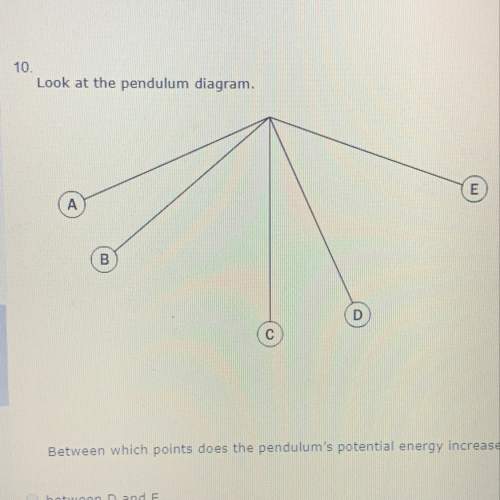
Physics, 29.09.2021 19:00 hannahkelly1629
0.20kg hocky puck initally travilling 5.0 m/s is pushed on ice by hocky stick with a constant force of 7.0N over a distance of 8.0m friction is negligible determine the final veloctiy of the hocky puele

Answers: 2


Other questions on the subject: Physics

Physics, 21.06.2019 17:30, corynanderson16
The position of a dragonfly that is flying parallel to the ground is given as a function of time by r⃗ =[2.90m+(0.0900m/s2)t2]i^− (0.0150m/s3)t3j^. a: at what value of t does the velocity vector of the insect make an angle of 34.0 degree clockwise from the x-axis? b: at the time calculated in part (a), what is the magnitude of the acceleration vector of the insect? c : at the time calculated in part (a), what is the direction of the acceleration vector of the insect?
Answers: 1

Physics, 21.06.2019 20:50, homeowkrkk
What is the type of the reaction below? bacl2 + h2so4 → 2 hci + baso4 double replacement synthesis single replacement decomposition
Answers: 1

Physics, 21.06.2019 21:30, XCNajera2003
Look at the potential energy diagram for a chemical reaction. which statement correctly describes the energy changes that occur in the forward reaction?
Answers: 2

Physics, 21.06.2019 22:00, homework2358
There is a theory that indicates that dinosaurs became extinct when about 65 million years ago, a large asteroid hit the earth surface. dust caused by this collision blocked the sunlight reaching the earth's surface and many forms of life became extinct due to the cold. fearing this threat, how large the radius of an asteroid should you be looking for if the dangerous asteroid size is approximately the same as the one that killed the dinosaurs? available data suggests that about 18% of that asteroid's mass ended up as a dust spread evenly over earth after eventually settling out of the upper atmosphere. about 0.0180 g/cm^2 of dust, which is chemically different than the earth's rock, covered the earth's surface. typical asteroids have a density of about 1.9 g/cm^3. now that we know the size of the asteroid, how much energy was released during impact, assuming all of it was just the kinetic energy of the asteroid right before the impact?
Answers: 1
You know the right answer?
0.20kg hocky puck initally travilling 5.0 m/s is pushed on ice by hocky stick with a constant force...
Questions in other subjects:

Mathematics, 14.06.2021 21:10

Mathematics, 14.06.2021 21:10

Mathematics, 14.06.2021 21:10

Mathematics, 14.06.2021 21:10

English, 14.06.2021 21:10

Mathematics, 14.06.2021 21:10


English, 14.06.2021 21:10

Mathematics, 14.06.2021 21:10




